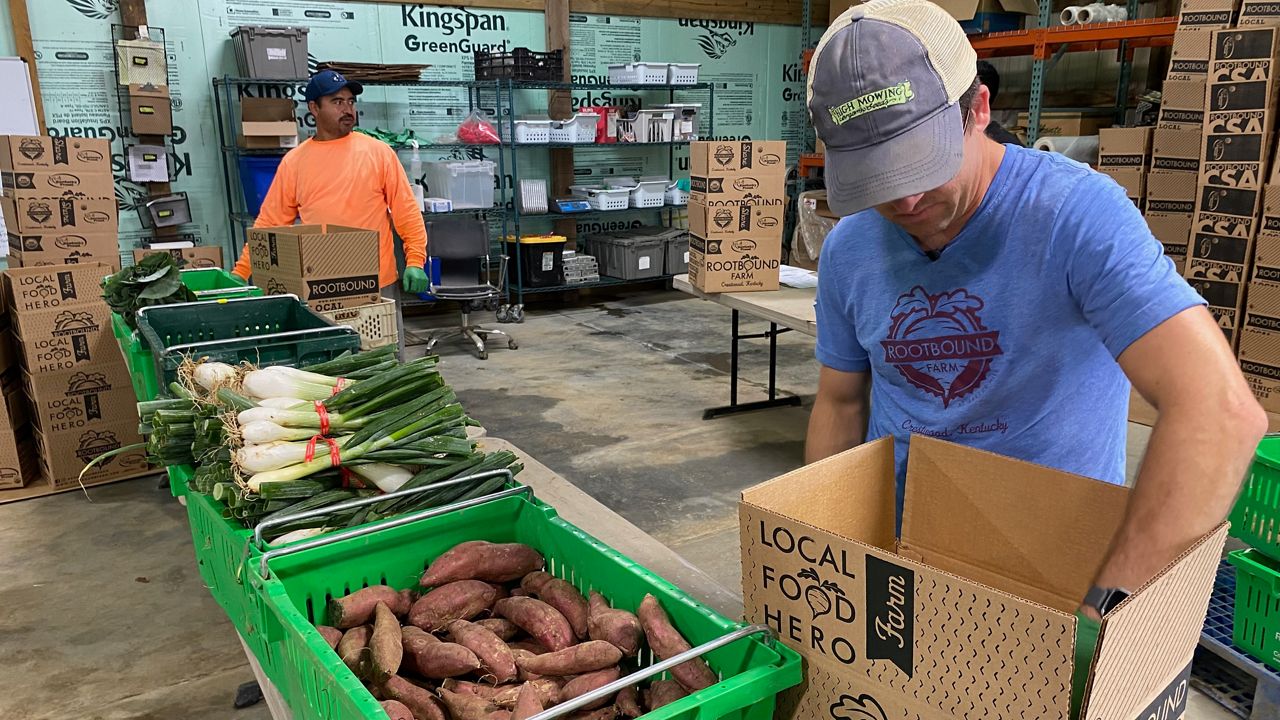CRESTWOOD, Ky. — Affordable and reliable labor in agriculture has been a crisis even before COVID-19, according to Kentucky Agriculture Commissioner Ryan Quarles. It’s even become a top three agricultural issue nationwide.
What You Need To Know
- H-2A visa program helps American farmers fill employment gaps by hiring workers from other countries
- Ben Abell started the H-2A program at Rootbound Farm five years ago
- Abell currently has 10 employees through the H-2A program
For co-owner of Rootbound Farm, Ben Abell, it’s one of the biggest challenges he has faced: finding returning employees or even hiring seasonal employees.
“Becoming larger, we needed a more consistent and skilled labor force, so right now we have a mix of employees,” Abell said. “Some are in the H-2A program coming up from Nayarit, Mexico.”
According to USDA, the H-2A visa program helps American farmers fill employment gaps by hiring workers from other countries. When hiring foreign workers under the program, you must also provide housing, livable fees and transportation.

Abell started the H-2A program at Rootbound Farm in Crestwood five years ago with just five employees.
“A couple of employees are fluent and the rest of us, including myself, just do our best and try to commit to learning Spanish and incorporating it into our workflow,” Abell said.
The H-2A classification allows a worker to stay for 10 months or fewer and then return to his or her home country. Abell would like to see changes made to some rules.
“If I was in the federal government, there’s things like the requirement that folks go back, can only work 10 months out of the year,” Abell said. “It is supposed to be filling a seasonal need as farms like us try to feed people on a year-round basis. It seems a little strange to have that regulation.”
According to the New Agriculture Economy by Joel Sams, Quarles believes the H-2A program should be overhauled and moved to the U.S. Department of Agriculture rather than the U.S. Department of Labor—as seasonal labor becomes a primary concern for farmers across the country.
“I do think it would’ve been really difficult to feed as many people as we’re trying to feed without having the reliability and the ability to grow a really awesome team that we’ve had with the H-2A program,” Abell said.
Since starting the H-2A program five years ago, Abell has grown his employee base to 10.



